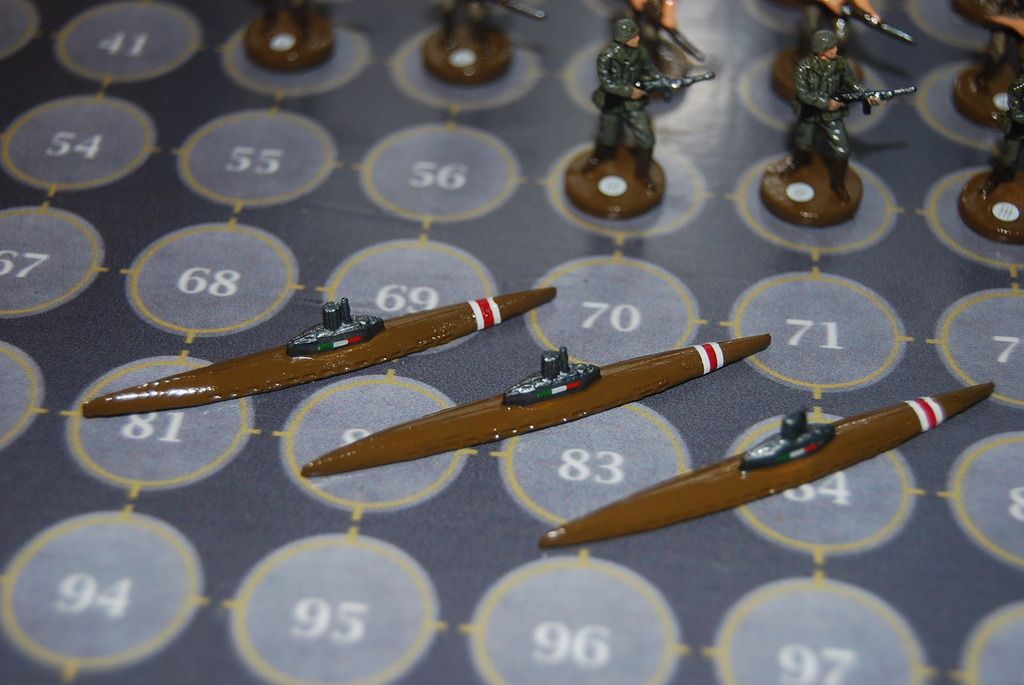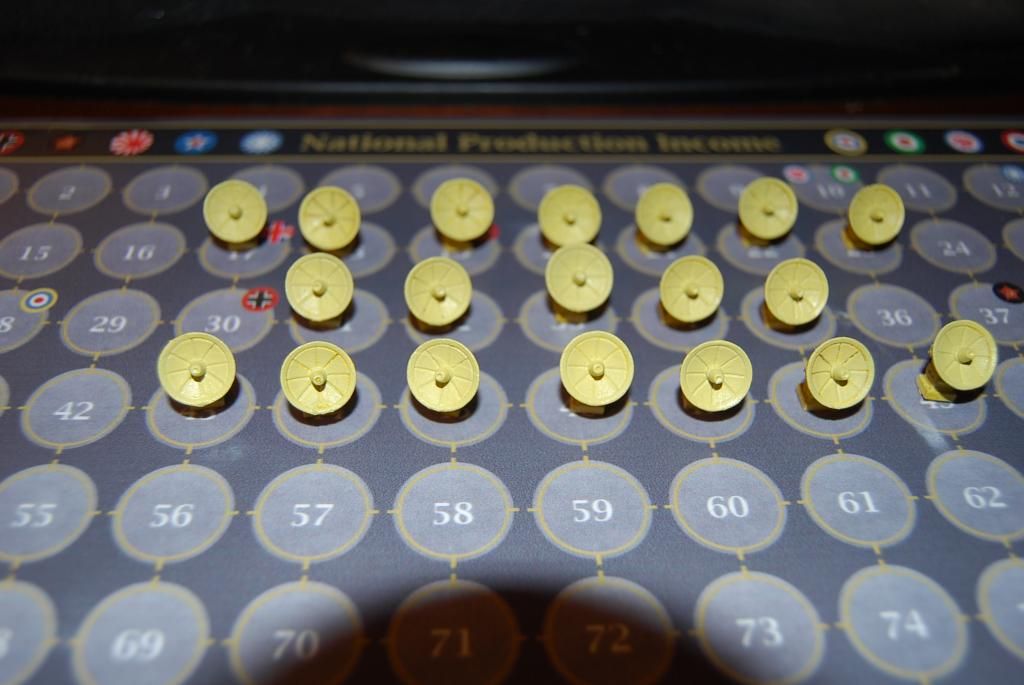Well, leave it to the community to come up with a great way to fix the version.
Only problem is, I still have to play “official” versions of the game (with bid obv), so I can’t conjecture about changing the game too much. Seems wise to tweak what’s broken in order to breathe life into this version, but we’re mostly discussing how that bid is going to play out in a problematic game.
Game 119 (42.2) This time, I was Germany. Of course, my opponent needed to show me how good my opener is as long as someone else does it. He hit finland (took), wrussia (left with 1 armor, perfect strafe), and Ukraine (left with 1 fighter, perfect retreat).
After I lost all these pieces, it felt like I had minimal stuff left as Germany; I was pre-gutted. At that point, I should have probably gone 100% land but I did fiddle around with protecting my ships and so only got 2-5 armor inf per turn down.
Japan hit many of its objectives, surprising the American early fleet of Alaska, chasing off UK, grabbing tons of money. Thought that the allied play could have been wiser but that wasn’t my side of the board this time.
Allies admitted a loss, even though I couldn’t take Moscow in any event, the loss of the KJF fleet was too much.
Takeaway; Russia is better off hitting x3 territories and killing what it can, or Germany rages. When I hit x3, I get my butt kicked and Germany has plenty left. When my opponent does it to me? I lose it almost all the good stuff Germany has. Hitting finland may be better than anticipated because there are only limited Norway troops to reply (and if the fleet is down, then no reinforce.
Game 120 (G41) This setup is amazing, it takes forever and you get everything. One of the guys insisted on putting kamis back in, as far as I can tell Oztea took them out simply to give the US a chance of actually confronting Japan, the kamis add risk to any kind of conventional takeover.
Either way, the game is much harder for the Axis, to the point of being difficult to win. Japan attacked and took Hawaii, an amazing amount of stuff came. The USA had to send everything in reply; 1 carrier 2 tacticals and 2 strats lived. Though I intended to KGF, he kept most of my stuff busy with retaking Hawaii. I was going to send the strats to London, but the Japan pressure meant that I had to orient most of my actions around keeping him at bay.
There are some ways for the US to grab german income, and make a difference in Africa. This still requires careful buying, my fleet at the end of the game (T5 begin) was 1 cruiser, 1 bb, 2 carriers, 5 trans with 4 more coming.
Japan lost its continental empire to the little guys. One bad move in Russia and Japan’s money is cooked. Japan may have held USA attention, but it was at the cost of picking off UKANZAC ships and Chinese strongpoints and so his money was 22 at game end.
But, despite the odds, Germany used Italy to kill a 5 man stack of infantry, then pierced Moscow with 11 tanks 6 mechs and air, winning with one tank. That gave him $104, which would have brought his airforce back to life.
Game ended after 8 hours with an allied minor victory, Japan admitted he was on the ropes.


















